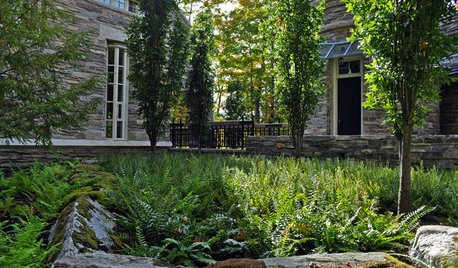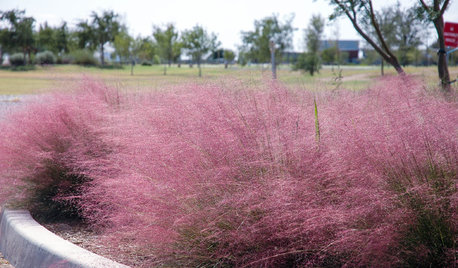Native Plants. . . Mimosas and other beautiful things
7 years ago
Related Stories

GARDENING GUIDESGreat Design Plant: Woodland Garden Beauty Polystichum Acrostichoides
Eastern U.S. native Christmas fern is a living decoration in the winter woodland garden
Full Story
GARDENING GUIDES10 Top Native Plants for the U.S. Southeast
For a low-maintenance and wildlife-friendly landscape, use Southern natives that withstand heat and humidity
Full Story
GARDENING FOR BUTTERFLIES3 Ways Native Plants Make Gardening So Much Better
You probably know about the lower maintenance. But native plants' other benefits go far beyond a little less watering and weeding
Full Story
NATIVE PLANTSPlant These Fall-Flowering Natives in Early Summer for Pollinator Love
These 3 groups of plants will support masses of beneficial insects come autumn
Full Story
NATIVE PLANTS10 Top Plants Native to the Desert Southwest
Get a thriving garden despite unforgiving conditions with these tough, unthirsty, sun-loving beauties
Full Story
GARDENING GUIDES15 Native Flowers That Feed Native Bees
These perennials offer superfood to hundreds of bees and are gorgeous in their own right
Full Story
GARDENING GUIDES9 Clay-Busting Native Flowers for Summer Sun
These plants survive and even thrive in tough clay soil east of the Rocky Mountains
Full Story
GARDENING GUIDESGreat Design Plant: Asclepias Incarnata for a Butterfly Garden
Beautiful swamp milkweed makes it easy to help monarchs and other pollinators in eastern U.S. gardens
Full Story
FLOWERS AND PLANTS8 Essential Native Ground Cover Plants for the Southeast
These low-growing ferns, shrubs and palms blanket the ground to help with erosion and soil moisture
Full Story0

INSPIRING GARDENSNative Plants Bring 10 Southern California Front-Yard Gardens to Life
Rare plants, rain gardens and wildlife habitats are just a few of the features showcased on the 2016 Theodore Payne Native Plant Garden Tour
Full StorySponsored
More Discussions






Nancy RW (zone 7)Original Author
dbarron
Related Professionals
Garden City Landscape Architects & Landscape Designers · Newcastle Landscape Architects & Landscape Designers · Byram Landscape Contractors · Canton Landscape Contractors · Cornelius Landscape Contractors · Hicksville Landscape Contractors · Madera Landscape Contractors · Munster Landscape Contractors · Oviedo Landscape Contractors · Plantation Landscape Contractors · Tuscaloosa Landscape Contractors · Waterford Landscape Contractors · Meridian Decks, Patios & Outdoor Enclosures · Pittsburgh Decks, Patios & Outdoor Enclosures · South Milwaukee Decks, Patios & Outdoor EnclosuresMacmex
Okiedawn OK Zone 7
Nancy RW (zone 7)Original Author